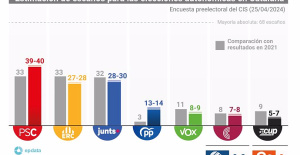At the turn of the century, Sweden had the second-lowest income differential in the Nordic countries. In the year 2017, which was the income inequality in the Nordic countries, is largest in Sweden, according to the report, the State-of-the-Nordic-Region by 2020.
by Kjell Nilsson, the point of the fact that Sweden has had a steady economic growth during these years, which tend to lead to an increase in income inequality.
But Norway has had a strong growth, and they have a much smaller gap than Sweden, " he said.
"on the other hand, we can see that in the case of Finland and Iceland, it has been associated with a decline in economic development, and this is where income inequality has been stopped, or been reduced," he adds.
Link to a graphic of a hard-hit by the financial crisis of 2007-09. Sweden, by contrast, weathered the crisis fairly well.
another probable reason for the income gap has increased the most in Sweden is the fact that the country has received more immigrants than its neighbours have done. These have a lower employment rate than their native-born peers and therefore less revenue.
the number of foreign-born residents in the total population in Sweden is 19 per cent; one-fifth of the country is thus born.
the inclusion of Norway and Iceland is high – 16% of the population in these countries is foreign-born. But it's a different kind of immigration than the one dominating in Sweden.
" The high level of which will depend on the numbers of immigrant workers. It is a very big part of their immigration, " says Johnson.
"There are a lot of swedes working in Norway, and many of the lithuanians and the poles in the Island," he adds.
in the future, the growing economic threat is the lack of manpower. In 72% of the municipalities in the Nordic countries, the working-age population will shrink by 2040.
Even though many glesbygdskommuner are going to experience the same thing, it does, however, increase the proportion of the working age in the country.
to The right on immigration. Therefore, it can be a positive force for Sweden in the long term, and, in particular, to the local authorities, who would otherwise have a smaller share of working-age in the sinbefolkning.
" But it is a prerequisite that they are able to do the work. This is the most important factor, " notes Johnson.
in the nordic regions with regard to their future potential. The regions are compared on the basis of the demographics of the economy and the labour market. In this year's edition is taking Oslo is at the top on the basis of demographics and the economy. Stockholm, sweden, ended up in third place, just after the Copenhagen, denmark.
However, the report summed up the position in mid-sized regions, the Uppsala, sweden, who graduated at the top.
" a Great university, very close to the airport, and is within commuting distance of Stockholm, concludes Kjell Nilsson's benefits.
the Worst performance since the last report, Blekinge has been. In the year 2018, the had in Blekinge, with the highest rates of youth unemployment in the nordic region.
<
 Exploring Cardano: Inner Workings and Advantages of this Cryptocurrency
Exploring Cardano: Inner Workings and Advantages of this Cryptocurrency Seville.- Economy.- Innova.- STSA inaugurates its new painting and sealing hangar in San Pablo, for 18 million
Seville.- Economy.- Innova.- STSA inaugurates its new painting and sealing hangar in San Pablo, for 18 million Innova.- More than 300 volunteers join the Andalucía Compromiso Digital network in one month to facilitate access to ICT
Innova.- More than 300 volunteers join the Andalucía Compromiso Digital network in one month to facilitate access to ICT Innova.-AMP.- Ayesa acquires 51% of Sadiel, which will create new technological engineering products and expand markets
Innova.-AMP.- Ayesa acquires 51% of Sadiel, which will create new technological engineering products and expand markets A Commission created by the CSD will supervise the RFEF
A Commission created by the CSD will supervise the RFEF The AN judge prosecutes the former ETA leader for her responsibility in the kidnapping and murder of Miguel Ángel Blanco
The AN judge prosecutes the former ETA leader for her responsibility in the kidnapping and murder of Miguel Ángel Blanco The European Parliament condemns the contacts of the Catalan independence movement with Russia and demands an investigation
The European Parliament condemns the contacts of the Catalan independence movement with Russia and demands an investigation The PSC would win the Catalan elections with 39-40 seats, Junts would obtain 28-30 and ERC 27-28, according to the CIS
The PSC would win the Catalan elections with 39-40 seats, Junts would obtain 28-30 and ERC 27-28, according to the CIS How Blockchain in being used to shape the future
How Blockchain in being used to shape the future Not just BTC and ETH: Here Are Some More Interesting Coins Worth Focusing on
Not just BTC and ETH: Here Are Some More Interesting Coins Worth Focusing on Retrópolis brings the golden age of video games and computing to the UPV
Retrópolis brings the golden age of video games and computing to the UPV Looking for video games that value the neighborhoods of Valencia
Looking for video games that value the neighborhoods of Valencia UPV researchers improve the efficiency of air conditioning systems using a geothermal heat pump
UPV researchers improve the efficiency of air conditioning systems using a geothermal heat pump València is committed to citiverse and smart tourism to be "the reference technological hub of the Mediterranean"
València is committed to citiverse and smart tourism to be "the reference technological hub of the Mediterranean" A million people demonstrate in France against Macron's pension reform
A million people demonstrate in France against Macron's pension reform Russia launches several missiles against "critical infrastructure" in the city of Zaporizhia
Russia launches several missiles against "critical infrastructure" in the city of Zaporizhia A "procession" remembers the dead of the Calabria shipwreck as bodies continue to wash up on the shore
A "procession" remembers the dead of the Calabria shipwreck as bodies continue to wash up on the shore Prison sentences handed down for three prominent Hong Kong pro-democracy activists
Prison sentences handed down for three prominent Hong Kong pro-democracy activists ETH continues to leave trading platforms, Ethereum balance on exchanges lowest in 3 years
ETH continues to leave trading platforms, Ethereum balance on exchanges lowest in 3 years Investors invest $450 million in Consensys, Ethereum incubator now valued at $7 billion
Investors invest $450 million in Consensys, Ethereum incubator now valued at $7 billion Alchemy Integrates Ethereum L2 Product Starknet to Enhance Web3 Scalability at a Price 100x Lower Than L1 Fees
Alchemy Integrates Ethereum L2 Product Starknet to Enhance Web3 Scalability at a Price 100x Lower Than L1 Fees Mining Report: Bitcoin's Electricity Consumption Declines by 25% in Q1 2022
Mining Report: Bitcoin's Electricity Consumption Declines by 25% in Q1 2022 Oil-to-Bitcoin Mining Firm Crusoe Energy Systems Raised $505 Million
Oil-to-Bitcoin Mining Firm Crusoe Energy Systems Raised $505 Million Microbt reveals the latest Bitcoin mining rigs -- Machines produce up to 126 TH/s with custom 5nm chip design
Microbt reveals the latest Bitcoin mining rigs -- Machines produce up to 126 TH/s with custom 5nm chip design Bitcoin's Mining Difficulty Hits a Lifetime High, With More Than 90% of BTC Supply Issued
Bitcoin's Mining Difficulty Hits a Lifetime High, With More Than 90% of BTC Supply Issued The Biggest Movers are Near, EOS, and RUNE during Friday's Selloff
The Biggest Movers are Near, EOS, and RUNE during Friday's Selloff Global Markets Spooked by a Hawkish Fed and Covid, Stocks and Crypto Gain After Musk Buys Twitter
Global Markets Spooked by a Hawkish Fed and Covid, Stocks and Crypto Gain After Musk Buys Twitter Bitso to offset carbon emissions from the Trading Platform's ERC20, ETH, and BTC Transactions
Bitso to offset carbon emissions from the Trading Platform's ERC20, ETH, and BTC Transactions Draftkings Announces 2022 College Hoops NFT Selection for March Madness
Draftkings Announces 2022 College Hoops NFT Selection for March Madness























